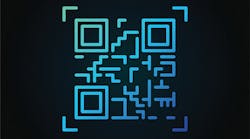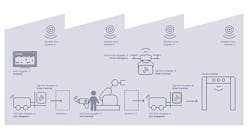For many process control operators and engineers, questions about what technologies and best practices emerged during COVID-19 are academic and somewhat pointless because their applications and facilities never shut down or even slowed during the pandemic. Their products and services like oil and gas, water/wastewater, pharmaceuticals, intermediate chemicals, and others remained as essential as always. For these users, the main impact of COVID-19 was that the usual mantra of "do more with less" was replaced by skeleton crews "doing a lot more with a lot less."
"Many of our users report that COVID-19 didn't change anything at their process facilities. They never did shut down because so many are in essential industries. They were just asked to do more with less, so they needed even more information on the spot," says Brian Fretschel, director of digital customer experience for Emerson Automation Solutions. "The age-old ways of using phones or emails to get technical support from the manufacturer are now augmented by virtual engagement paths that are more mobile and accessible, such as FaceTime, Zoom and Microsoft Teams. Many users expect these tools because they can show the support specialist what's happening on their end. Using video instead of phone calls or email can dramatically cut troubleshooting time. We expect the shift to these virtual displays on smart devices, including video-based, embedded manuals, will continue because of the time savings and convenience for our users."
Fretschel reports that another simple technology that proved it's worth during COVID-19 and continues to be useful post-pandemic is quick response (QR) matrix barcodes. "QR codes have been available for more than 10 years, but the pandemic highlighted their value," says Emerson's Fretschel. "Even before COVID-19, we had plans to add QR codes to every Emerson measurement device. Now 95% of those products carry them. Just like restaurants use them to link diners to menus, QR codes are a simple, easy, purpose-built tool that gives users access to the technical information they need with a single scan."
Fretschel adds that Emerson recently developed and deployed its walkdown software app, which lets its internal service technicians assess and document equipment in clients' facilities. "The walkdown app creates a digital information trail of device condition for users, accessible through their personalized Emerson accounts," he says.
Staving off shortages
Alan Porter, VP of electronics and semiconductor industries at Siemens Digital Industries Software, agrees that many businesses and industries didn't shut down during the pandemic, and instead faced global supply shortages and had to reallocate. "Many microprocessor orders slated for the auto industry were allocated to other markets like consumer electronics. The intention was to take advantage of expected increases in demand for consumer devices like tablet PCs and smartphones. However, overwhelming consumer demand for all these products remained high, so producers are still ramping up for all applications and markets. They have to make adjustments on the fly, using remote-access and mobile technologies that they continue to rely on as they scale up."
Because of the physical separations, obstacles and varying distances that have become commonplace, Porter reports that remote access depends on reliable and secure networking. "Users must be able to trust that devices like IIoT components and networks like Wi-Fi and 5G can give them the data yield they require," says Porter. "This begins with network and automation designs that use a shift-left process to consider critical design feedback for evaluation earlier in the development process. It's more effective because it uses data sooner for faster adjustments and mitigations and employs simulations to make processes run more efficiently. The demand for reliable remote access means that moving data securely is also paramount, whether it's by using encryptions, high-level blockchains, or tracking and tracing at each touchpoint of a network. Virtual design models and where a manufacturing process is actually at can then be tied into a closed loop to find useful correlations between the two."
Siemens' Porter adds that flexible, low-code programming and protocols enable remote access by allowing less-experienced users to employ complex software applications in challenging environments. "Users can tune low-code programming to their particular work environments. For example, if they want to visualize a production yield, they can show key performance indicators in real-time with a low-code app, instead of using traditional spreadsheet software," says Porter. "We acquired the low-code application platform, Mendix before COVID-19 emerged, but the pandemic just exacerbated the need for simpler programming solutions."
Porter suggests looking at the problem of remote access holistically, but tackling it in realistic pieces by establishing foundation principles for individual processes and scaling up. “It’s important not to lump everything together and ‘try to boil the ocean.’ For remote access, this means adopting flexible communication protocols and standards, using open technologies that can exchange data and checking what each functional domain requires,” says Porter. “This is where using low-code programming for HMI/SCADA interfaces comes in to drive displays and monitor equipment. The beauty of low-code is less software is needed because it combines existing software modules and templates that users can employ to put graphical user interfaces together. Siemens provides low-code platforms and services that users or third-parties can use to customize interfaces.”






